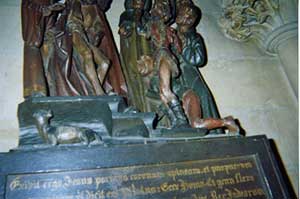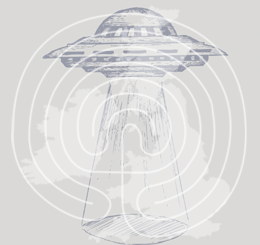Castlerigg Stone Circle
Castlerigg Stone Circle is one of the finest in Cumbria, it is spectacularly situated within a panorama of rugged hills of ever changing character, depending on the mercurial Lakeland weather.
 The circle consists of 38 stones of variable sizes and shapes; they are all un-hewn boulders, some standing over 5 feet in height, although some have fallen in the 5000 years since their erection. It has been estimated there were originally around 41 stones, so Castlerigg is relatively well preserved when compared with other circles in the British Isles. The stone circle has been tenuously dated at 3200BC, although there is always a buffer zone of a couple of hundred years when trying to date stone circles without accompanying archaeology. Castlerigg does not conform to a true circle, the Northeast face is flattened, perhaps due to some little understood aspect of megalithic surveying. Just inside the eastern end of the circle is a group of 10 stones forming a rectangular enclosure known as a cove, the purpose of which is unknown.
The circle consists of 38 stones of variable sizes and shapes; they are all un-hewn boulders, some standing over 5 feet in height, although some have fallen in the 5000 years since their erection. It has been estimated there were originally around 41 stones, so Castlerigg is relatively well preserved when compared with other circles in the British Isles. The stone circle has been tenuously dated at 3200BC, although there is always a buffer zone of a couple of hundred years when trying to date stone circles without accompanying archaeology. Castlerigg does not conform to a true circle, the Northeast face is flattened, perhaps due to some little understood aspect of megalithic surveying. Just inside the eastern end of the circle is a group of 10 stones forming a rectangular enclosure known as a cove, the purpose of which is unknown.
Excavations in the cove in 1882 provided very little in the way of archaeological finds, although quantities of charcoal were discovered. A wide space to the Northern end of the circle, framed by two large stones may have served as an entrance to the site. There is also an outlying stone to the Southwest of the circle, the function of which can now be only guessed at.
 There have been few excavations on the site, although a stone axe head was found in 1875, and the cove was excavated as mentioned earlier in 1882.
There have been few excavations on the site, although a stone axe head was found in 1875, and the cove was excavated as mentioned earlier in 1882.
On a more mysterious level the circle has been the focus of one well-recorded sighting of strange light phenomena. In 1919 a man called T. Singleton and his friend watched as white light-balls moved slowly over the stones. Strange lights seem to be a recurring theme at ancient sites throughout the world, they may have been one of the reasons ancient man built monuments at specific sites. There has been a lot of speculation as to their nature; it is most probable they are part of some natural phenomena related to fault lines.
 It has been noted that many of the stones of Castlerigg seem to reflect features in the surrounding hills, as though the landscape site is an interplay between the sacred space and the landscape beyond. Although open to criticism, it seems as though there are many features at Castlerigg that still have to be examined in the context of how ancient man would have experienced the site.
It has been noted that many of the stones of Castlerigg seem to reflect features in the surrounding hills, as though the landscape site is an interplay between the sacred space and the landscape beyond. Although open to criticism, it seems as though there are many features at Castlerigg that still have to be examined in the context of how ancient man would have experienced the site.




Solstice 2009
I stayed at Castlerigg to watch the sun rise for Summer Solstice this year. It was warm, dry but overcast . A crowd numbering probably a few hundred were spread out around and inside the circle, all in their own little groups, with a few burning camp fires and well placed paper lanterns setting a perfect scene and great atmosphere.
The narrow lane that takes you up to Castlerigg does however get very bsy and double parked quickly, making it very narrow in places, which a large van in front of us found out fairly quickly as it got stuck and had to reverse back.
I would just like to say to everyone who was at Castlerigg….Happy Solstice Guys 🙂
Re: Castlerigg Stone Circle
Spectaular doesn’t even cover it!
Surrounded by mountains this site is totally amazing, would love to do a solstice here just not with hoards of people!
The power within ‘the cove’ is wonderfully healing
Re: Castlerigg Stone Circle
The stones definitely reflect the mountains – I have a fab picture taken towards the valley (with the road behind you) and the shape of the stone exactly matches the slopes of the valley sides. Not daft, these stone-age types!
And I second the parking issue. Summer visitors beware 🙁